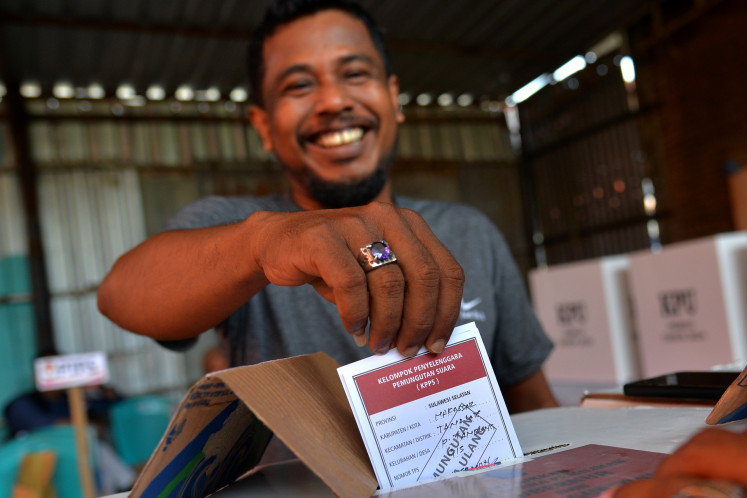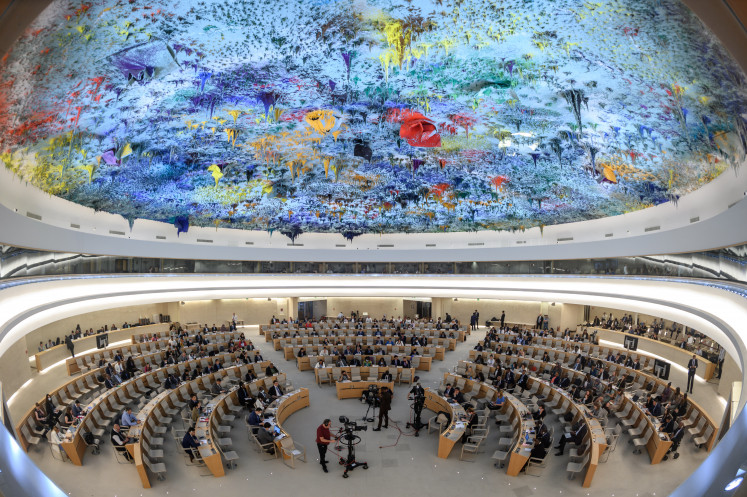Popular Reads
Top Results
Can't find what you're looking for?
View all search resultsPopular Reads
Top Results
Can't find what you're looking for?
View all search resultsSaving mangroves, improving village economy
Wayan Sukitra, 47, recalls a time when degraded mangrove forests in his small fishing village in Jungut Batu in Nusa Lembongan, Bali, allowed seawater to inundate it in high tides
Change text size
Gift Premium Articles
to Anyone
W
ayan Sukitra, 47, recalls a time when degraded mangrove forests in his small fishing village in Jungut Batu in Nusa Lembongan, Bali, allowed seawater to inundate it in high tides.
“Seawater could reach our houses and farming land each time the sea level rose,” said Sukitra.
Huge mangrove areas disappeared from Jungut Batu due to massive wood extraction. Villagers used to chop down mangrove trees to make fire for cooking and salt production, important to their economy.
However, coastal erosion caused by mangrove extraction might create new challenges for villagers since they lack dense mangrove forests that act as protective barriers against the ocean.
“Degraded mangrove forests may leave us unprotected against abrasion, ocean waves and even tsunamis,” said Sukitra, adding these forests were also fish habitats that villagers depended upon for their livelihoods.
Mangrove forests in Indonesia reach 3 million hectares or about 23 percent of total mangrove forests in the world, making them the largest share of mangroves on earth. Conserving wetlands, which include mangrove forests and tropical peatland swamps, has become an important issue in reducing emissions from deforestation and forest degradation (REDD) due to the fact it is much easier and more cost-effective to protect the wetlands.
“You have to keep in mind that wetlands can store carbon in their soil better than other forest types,” said Sebastian Persch, a researcher from the University of Göttingen, Germany.
Conserving mangrove forests became an essential issue in Jungut Batu from early 2000 when local people began interacting with conservation activists. Sukitra and other villagers, especially school students, then started replanting their degraded mangrove forests in his village.
Since 2005, the community group with its 42 members has developed a “mangrove seedlings bank” where at least 2,000 mangrove seedlings are being cultivated. Replanting mangroves rely on relentless efforts as only 10 percent of replanted mangroves will survive.
Jungut Batu villagers are now using gas stoves for daily activities such as cooking, instead of using mangrove tree branches. More villagers are now working as seaweed farmers. Producing salt gave them only Rp 50,000 (US$5.8) per daywhile working as seaweed farmers enables them to earn at least Rp 100,000 per day.
They are even exploring tourism potentials in their village. With his colleagues, Sukitra developed the “Mangrove Tour”, taking tourists around the mangrove forest with a canoe. A canoe can take four passengers at only Rp 70,000 per trip. There are 33 canoes available, all owned by the villagers.
“It’s good to see our people make livings without destroying the ecosystem,” said Sukitra.










